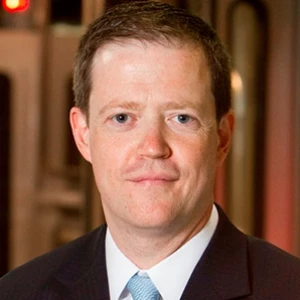America’s cities are changing fast—growing rapidly and acquiring economic and political clout. For city governments, this raises some challenging questions. How can they satisfy rising infrastructure demands while balancing their budgets? How can they reverse urban decay while preventing gentrification and rising rents from displacing local communities? These and other issues call for new approaches to innovation. But while governments understand the “what” of innovation, the “how” is more elusive.
Driving change in public sector settings is not easy. Boston Consulting Group, in partnership with the Centre for Public Impact (a BCG foundation) and the Aspen Institute’s Center for Urban Innovation, recently released a handbook—“ The Future of U.S. Cities ”—that tells stories of city problem solvers, highlights emerging practices from cities, and extracts valuable lessons learned. After speaking to more than 40 city problem solvers and extensively reviewing the relevant literature, we identified a set of common obstacles. These include gaps in essential skills, poor integration of data across systems or departments, and limited awareness of the opportunities that new technologies and data offer.
In tackling horizontal challenges such as mobility, cities need to adopt a systematic approach, bringing in stakeholders that, in the case of mobility, may range from transport agencies to electric vehicle manufacturers to app developers. Yet in many city halls, innovation depends on individuals or teams that are siloed in an innovation or technology office. Moreover, a culture resistant to experimentation can increase the risk of failure since it tends not to launch new approaches or services until they are “perfect”—which means missing opportunities to test and learn.
In tackling horizontal challenges such as mobility, cities need to bring in stakeholders ranging from transport agencies to electric vehicle manufacturers to app developers.
“The Future of U.S. Cities” offers examples of city governments that are rethinking the way they work, in order to make dramatic progress in three key dimensions:
- Align innovation efforts to the most important problems to solve.
- Empower a broad ecosystem to develop and launch solutions.
- Grow innovative efforts from individual pilots to achieve impact at scale.
For example, instead of just purchasing equipment, they can treat procurement as a collaborative process in which suppliers co-create city services. Similarly, they can approach partnerships between public and private sectors not as static arrangements but as dynamic coalitions that, with appropriate access to data, can test and learn together. Such alliances can then become catalysts for change, developing citizen-centric solutions and bringing them to market rapidly.
These new approaches demand new ways of working. And one powerful means of driving change is by adopting agile, an organizational model that uses small, cross-functional, autonomous teams to prioritize value and deliver change in iterative, fast-paced cycles. Cities that successfully scale agile can break down traditional silos, harness new sources of talent across their organizations, and develop the capabilities needed to create cities that are ready for the future.
Collaborative Procurement
The traditional city procurement process is slow and cumbersome, with narrowly defined problems to solve and, too often, a focus on obtaining solutions at the lowest possible cost. In this system, government views suppliers as providers of products and services rather than as development partners. And in cities with highly prescriptive processes that favor incumbent vendors, the onerous process of proposal submission may deter young companies that have bright ideas, new technologies, and effective solutions from approaching government at all.
A different approach to designing and building the cities of the future is essential . The real opportunity for cities is to see procurement as an entry point for new partners and resources and as a means of cultivating alternative and creative ways of tackling problems. Doing so means streamlining internal processes to eliminate inefficiencies, removing obstacles that discourage suppliers from bidding, and shifting from a process that is solely based on risk management and compliance to one that remains fair and compliant but is more responsive and includes feedback loops. These changes can foster a new culture of procurement in which contractors function as partners in co-creating city infrastructure and services to better meet the needs of citizens.
Cities should view procurement as an entry point for new partners and resources and as a means of cultivating alternative and creative ways of tackling problems.
The city of Philadelphia, Pennsylvania, has demonstrated the benefits of this approach. The city’s FastFWD initiative streamlined and codified procurement process for pilot projects, reducing the amount of paperwork required for a typical Request for Proposal from 47 pages to 18. It also committed to opening procurement in certain issue areas to a wider pool of applicants, by posting in the forums where startups look for opportunities. In one case, 137 companies from around the world submitted responses. Turning procurement into an open venue where developers and service providers can gain a deeper understanding of the challenges the city is facing and can submit their ideas has enabled Philadelphia to harness the innovative powers of entrepreneurs far more effectively than it did in the past.
Dynamic, Cross-Sector Coalitions
Given the complex challenges that cities face, the need for cross-sector collaboration has never been more pressing. As with procurement, however, cities can achieve far more through such collaboration if they shift away from the traditional model for creating public-private partnerships. Many cash-strapped governments have seen that model primarily as a way to shift the financial risks and legal liabilities associated with the development of infrastructure and services onto the shoulders of the private sector. Yet such projects carry risks for government, too, if they require taxpayers to foot the bill when revenues fail to materialize.
Instead, cities can create dynamic, cross-sector coalitions that link the public and private sectors but are more flexible, have shared goals, and can accommodate rapid changes in technology or demand for services. These looser alliances can encompass a wide range of stakeholders—including social partners—making it easier to create and bring to market solutions to horizontal urban challenges such as mobility. Rather than using partnership simply to outsource service provision, these dynamic collaborations bring together stakeholders with a broad array of perspectives and the ability to co-create new, citizen-centric solutions to common problems.
An example of this approach is the Detroit Mobility Innovation Initiative. Spearheaded by BCG, this initiative brought together ten public, private, and social sector entities to devise approaches to key mobility issues in Detroit, Michigan, ensuring that all stakeholders agreed on what problems the initiative needed to solve, assigning clear roles and responsibilities to partners, and—crucially—discussing upfront the constraints facing each, in order to find ways to work around them. The cross-sector approach, built around mutual interests, enabled the participants to develop solutions at speed and to direct the skills, capabilities, and resources of all municipal agencies to meet the city’s most pressing mobility challenges. During a 12-week innovation sprint in 2018, the group identified six promising programs for the city to run as pilots over the ensuing 12 months. One of these is a revolutionary on-demand car-sharing model designed to lower insurance and operating costs through features that encourage responsible driving. Another introduces a public transportation system that schedules buses and shuttles on the basis of real-time demand, creating more routes and reducing transit times.
Agile in the City
To support new collaborative approaches to procurement and dynamic cross-sector partnerships, cities must alter existing cultures and think differently about their ways of working. Among the most common complaints we encountered was that city governments tend to promote a risk-averse culture that does not welcome failure as a tool for learning and improvement. City governments must also contend with the differing demands of multiple stakeholders, objectives that shift with political cycles, firmly entrenched legacy systems, and long-established power structures.
Yet today’s urban challenges span the jurisdictions of several departments. In response, cities are warming to the idea of taking a more agile approach to teaming and are seeing the benefits of creating small, cross-functional, autonomous teams that work in iterative, fast-paced cycles. This approach encourages teams to work across departments to harness the different skills and competencies that reside within city hall. Cities are expanding their cross-functional efforts by creating multidisciplinary innovation teams; building official, non-project-based links between teams; initiating “tours of duty” in which innovation teams members rotate through different departments; and even restructuring whole departments to reflect new, interdepartmental goals.
Cities that adopt an agile approach are seeing the benefits of creating small, cross-functional, autonomous teams that work in iterative, fast-paced cycles.
The city of San José, California, uses the agile technique of scrum practices in its Office of Civic Innovation & Digital Strategy to prioritize the work that the office needs to do to advance its mission. Scrum is an agile management framework that helps teams plan and deliver work incrementally through fixed-duration cycles called sprints. In a Medium post , Michelle Thong, the city’s digital services lead, described how her office uses two-week sprints to agree on goals for the next sprint, break up each goal into smaller tasks, map progress in 15-minute daily stand-up meetings, plan the upcoming workday, and identify roadblocks. Thong’s office uses sprint reviews to assess how successfully goals are being met, and it uses sprint retrospectives to improve the process for subsequent sprints. The scrum technique makes it easier for San José’s municipal teams to prioritize work, increase accountability, remain aligned while working autonomously, and use iteration to foster continuous improvement.
Conclusion
Because they can shape the quality of life for a growing share of the US population, cities have a tremendous opportunity to contribute to equitable and sustainable development. In the process, city governments are beginning to recognize that residents are not merely customers or end users of services, but also interested parties that are well positioned to understand the problems facing their communities and how to tackle them.
Governments that successfully drive real change will do so by aligning innovation across city departments and empowering city residents—from businesses to private citizens—to become problem solvers and partners playing a key role in the innovation ecosystem. And by creating environments inside and outside city hall that encourage and support experimentation, city governments will nurture promising solutions that can achieve impact through scale.












